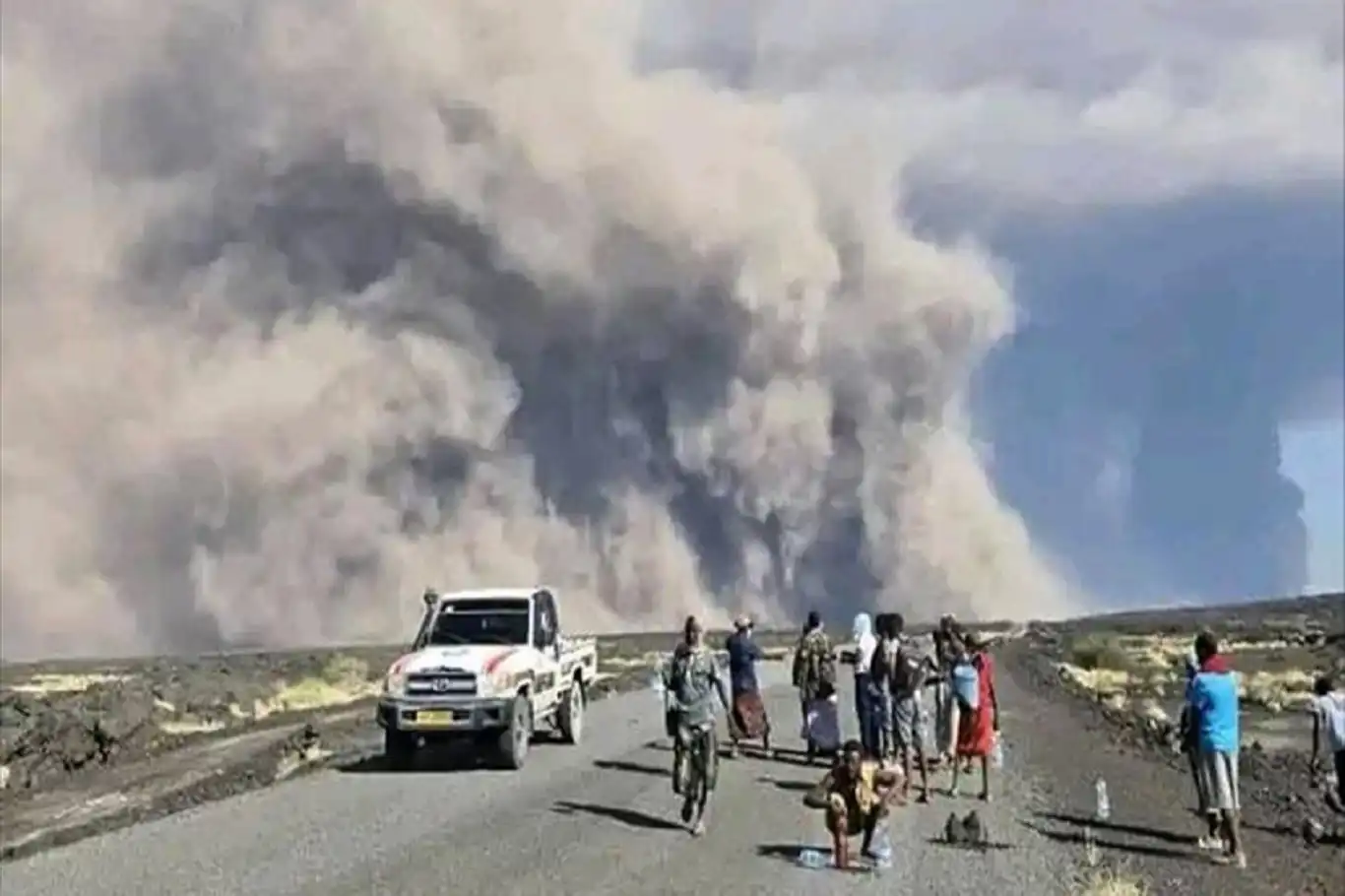Ethiopian volcano Hayli Gubbi erupts after 12,000 years of dormancy


The Hayli Gubbi shield volcano in Ethiopia’s remote Afar Region erupted on November 23, 2025, marking its first confirmed activity in at least 12,000 years and only the second historically recorded eruption of a Holocene-quiescent volcano in Africa this century.
Satellite imagery first detected a vigorous ash plume rising to approximately 13.5 km (44,000 ft) above sea level late on November 23. The Toulouse Volcanic Ash Advisory Center (VAAC) issued multiple high-level aviation alerts as the plume spread northeast across the Red Sea, affecting airspace over Yemen, Oman, Saudi Arabia, Pakistan, and northwest India over the following 48 hours.
By November 25, the eruption had entered a lower-intensity phase, with intermittent ash emissions reaching 6–9 km altitude and a persistent sulfur dioxide (SO₂) cloud tracked by NASA’s Aura/OMI and Copernicus Sentinel-5P satellites. The SO₂ mass was estimated at over 150 kilotons, one of the largest single-volcano releases of 2025.Local Impact and Response
Heavy ashfall blanketed villages within a 30-km radius of the volcano, including settlements in Administrative Zone 2 of the Afar Region. The Afar Regional Government reported no human fatalities or serious injuries, but several hundred pastoralist families were temporarily displaced due to contaminated water sources and grazing lands. Livestock losses are still being assessed, though early reports indicate dozens of goats and camels have died after ingesting ash-covered vegetation.
Regional authorities, supported by the Ethiopian National Disaster Risk Management Commission, have begun distributing water tanks and animal feed. The United Nations Office for the Coordination of Humanitarian Affairs (UNOCHA) has placed the Afar Region on alert for possible escalation of humanitarian needs if eruptive activity resumes.
The Smithsonian Institution’s Global Volcanism Program confirmed that Hayli Gubbi had no confirmed Holocene eruptions prior to this event, making it one of the planet’s longest-dormant volcanoes to reawaken. Researchers from Addis Ababa University and the University of Bristol have deployed a rapid-response seismic and gas-monitoring network, noting that the eruption appears to be fed by a shallow magma intrusion beneath the northern Danakil segment of the Afar Rift.
“This is an extraordinarily rare opportunity to study the initial phases of rift-related shield volcano reactivation,” said Dr. Tadesse Alemu of Addis Ababa University’s School of Earth Sciences. “The geochemical signature suggests primitive basaltic magma similar to that seen in the 2005–2011 Dabbahu-Manda-Hararo rifting episode, but occurring farther north than previously documented.”
Infrared satellite imagery shows that the main vent remains active with weak ash emissions and occasional incandescent lava fountains. Thermal anomalies detected by MODIS and VIIRS indicate active lava flows on the volcano’s southern flank, though poor weather and dust storms have hampered ground observation.
Aviation authorities have maintained a RED color code for the area, and several regional flights have been rerouted. The VAAC forecasts that light ash may continue to affect the northern Indian Ocean and Arabian Sea shipping lanes for another 24–48 hours.
The Afar Regional Government has urged residents to remain vigilant and avoid unnecessary travel near the volcano. Further updates are expected as international research teams arrive in the coming days. (ILKHA)
LEGAL WARNING: All rights of the published news, photos and videos are reserved by İlke Haber Ajansı Basın Yayın San. Trade A.Ş. Under no circumstances can all or part of the news, photos and videos be used without a written contract or subscription.
Medical authorities in Gaza reported Tuesday that the Palestinian death toll has climbed to 69,775 since the start of the Israeli aggression in October 2023, with children and women comprising the majority of the victims.
The Israeli occupation forces have detained at least 50 Palestinians during widespread overnight raids across the occupied West Bank and Jerusalem, according to a statement from the Palestinian Prisoners’ Society.
At least six people were killed overnight Tuesday as Russia launched a new wave of attacks targeting residential buildings and energy infrastructure in Ukraine’s capital Kyiv and the northeastern Sumy region.